

Last Updated: 23 January, 2025 5 Mins
In this tutorial page, we are going to learn about all types of queues in data structures.
This tutorial will give you good knowledge and understanding about each type of queue and their unique properties, implementations, and applications.
Knowledge of each type of queue is essential for effective programming and problem-solving.
Let's read and understand each type of queue with a simple definition and diagram.
A simple queue, or linear queue, is used to store and manipulate the data elements. A simple queue data structure applies the concept of "First in, First Out" (FIFO), which means the first added element into the queue is to be the first removed from the queue. Queues do not allow random insertion and deletion operations.
A Simple Queue is open at both ends, which enables insert operations to be performed at one end called REAR or TAIL and delete operations to be performed at another end called FRONT or HEAD.
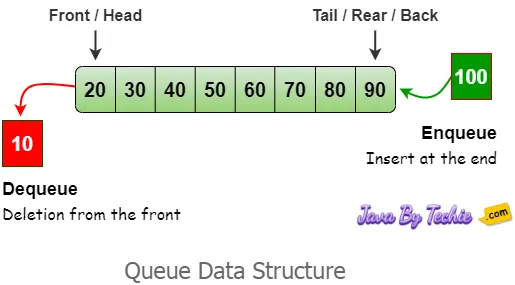
A Circular Queue is another type of queue; it also follows the principle of First in, First out" (FIFO). In the circular queue, the last element is connected to the first element of the queue, forming a circle.
A circular queue solves the major limitation of a normal queue. In a normal queue, once a queue is full, we cannot insert a new element, even if there is a space in front of the queue.
A circular queue allows us to keep on inserting an element; if it reaches the end of the queue, then again insert from the start. Such types of queues are very efficient and useful for tasks like buffering data in a computer system, managing waiting lists, and making sure no memory space is wasted.
Circular queue is also called Ring Buffer.
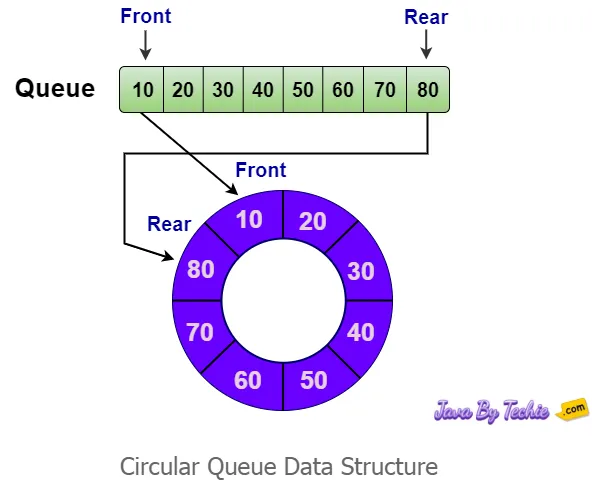
One particular kind of queue is a Priority Queue, where each element is associated with a priority value and elements are processed according to their priority, which means higher-priority elements are processed first, and so on.
Characteristics of a Priority queue:
Deque is a linear data structure where the insertion and deletion operations are performed from both ends, which means we can insert and delete an element at the front end or rear end both.
The following diagram represents a Deque in data structure.
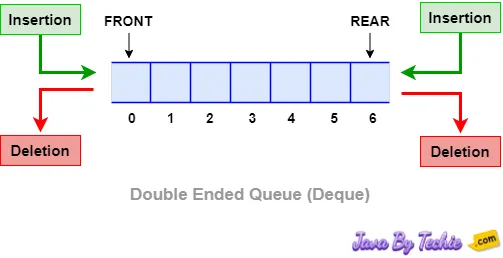
Deque does not follow the principal of the FIFO (First-In-First-Out) because it allows insert and delete operations from both ends.
There are basically two different kinds of Deque in data structure:
Let us discuss about them in detail as give below.
Input restricted queue: In an input restricted queue, the insertion operation can be performed at only one end, while deletion can be performed from both ends.
As shown in the diagram below, for understanding.
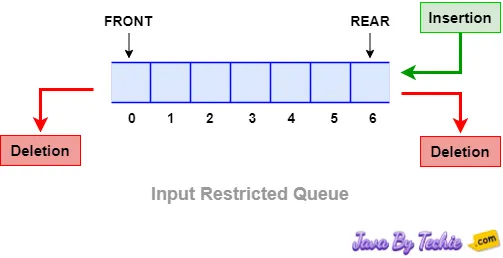
Output restricted queue: In an output restricted queue, the deletion operation can be performed at only one end, while insertion can be performed from both ends.
As shown in the diagram below, for understanding.
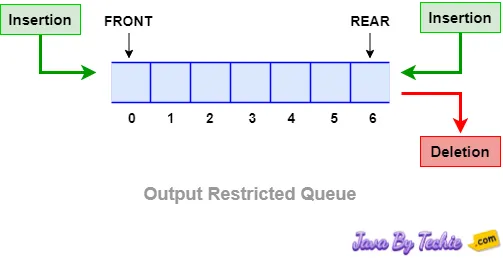
That's all, guys. I hope this article is helpful for you.
Happy Learning... 😀
feedback@javabytechie.com